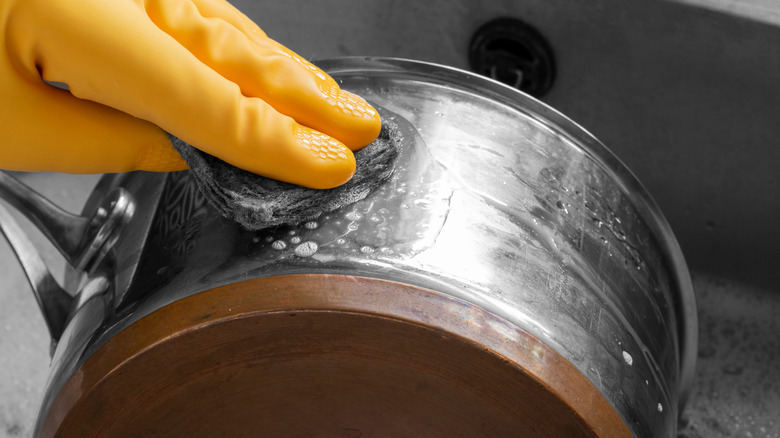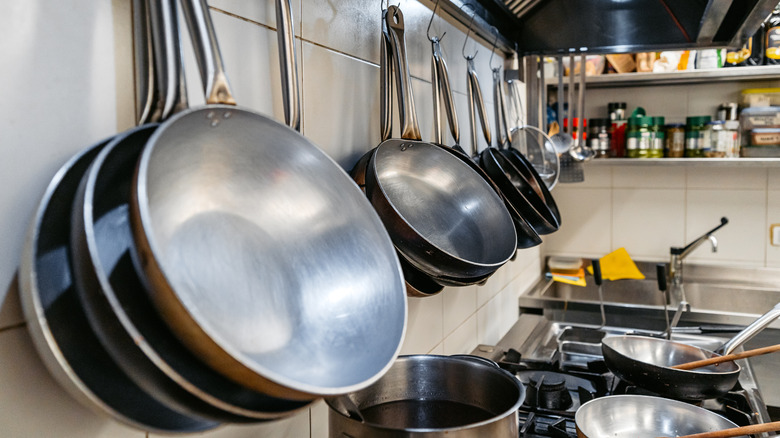Cloudy Stainless Steel Cookware? Reach For This Pantry Staple
We may receive a commission on purchases made from links.
When you first begin using stainless steel cookware, the silver sheen of each pan is undeniably satisfying. After making sure your stainless steel pans are non-stick and then cooking up a slew of delicious meals, it won't be long before your pans develop cloudy spots and stains. This isn't anything you did wrong, but it shouldn't be ignored, either. Luckily, there's a kitchen cleaning magic trick hiding right in your pantry that will help you bring the shine back to your cookware.
You may already use distilled white vinegar for cleaning around your home, but this superhero of the home can also be used to remove those unsightly marks from stainless steel cookware. Fill the pot or pan with three parts distilled white vinegar and one part water and place it on a burner. Once the contents begin to boil, turn off the heat and let it soak for several minutes before rinsing the cookware and thoroughly drying it. The stains should either be gone or easily removed with the next cleaning. Another method you can use is cleaning these pots and pans with a stainless steel cleaner like Barkeeper's Friend which works to break apart residue with the use of oxalic acid. Repeat the cleaning process any time you notice the stains returning.
What causes cloudy spots on your stainless steel and can you prevent it?
Seeing these cloudy marks time and time again on your pots and pans can be frustrating, but it's not you that causes them; it's your water. Cloudiness is caused by mineral deposits like calcium building up over time. Hard water is water with high mineral content, which can lead to the buildup of limescale on everything from faucets to dishes. The reason distilled white vinegar works so well at combatting the stains hard water leaves behind is that its high acidity dissolves the mineral particles and makes it easy to remove buildup.
While there are a few ways to try and prevent hard water from ravaging your home, it's tricky — especially if you're using municipal water. You'll likely just need to clean your pans with vinegar on a fairly regular basis. However, for those who would prefer not to deal with hard water, you can install a water softener in your home. Another way to mitigate mineral buildup on pans is to clean and dry them quickly. Instead of letting them air-dry, use a cloth to dry them off to prevent the water from resting too long in the pan. In the meantime, grab some white vinegar (the kind for either cooking or cleaning).

